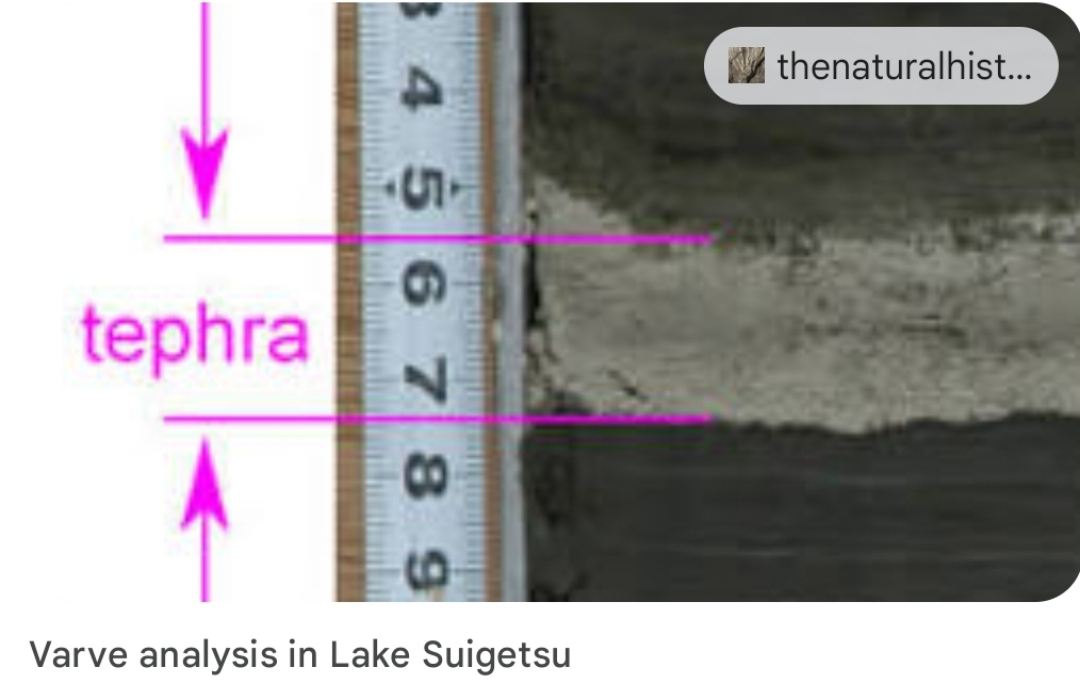Japan's "Miracle Lake" and the Advancement of Radiocarbon Dating
Lake Suigetsu, nestled amidst the picturesque mountains of Fukui Prefecture in Japan, is often referred to as the "miracle lake." This seemingly ordinary body of water holds an extraordinary secret within its depths: a remarkably preserved record of Earth's past, meticulously layered within its sediments. This unique characteristic has allowed scientists to construct an unparalleled timeline of environmental and climate change, significantly refining the technique of radiocarbon dating.
The Science of Radiocarbon Dating
Radiocarbon dating is a crucial tool in archaeology and paleontology, enabling researchers to determine the age of organic materials up to 50,000 years old. The method relies on the presence of carbon-14, a radioactive isotope of carbon, in organic matter. Carbon-14 is constantly formed in the atmosphere and absorbed by plants through photosynthesis. When an organism dies, it stops absorbing carbon-14, and the existing amount begins to decay at a known rate. By measuring the remaining carbon-14 in a sample, scientists can calculate how long ago the organism died.
However, the accuracy of radiocarbon dating depends on the assumption that the concentration of carbon-14 in the atmosphere has remained constant over time. Various factors like solar activity and volcanic eruptions can influence atmospheric carbon-14 levels. To account for these fluctuations, scientists require a reliable calibration curve that correlates radiocarbon ages with calendar years.
Lake Suigetsu's "Time Capsule"
This is where Lake Suigetsu comes into play. The lake's deep basin and unique environmental conditions have created an ideal environment for preserving annual layers of sediment, much like the rings of a tree. Each year, a layer of light-colored diatoms (algae) settles on the lake bed, followed by a layer of darker sediments.
This process has continued uninterrupted for tens of thousands of years, resulting in a remarkably precise chronological record.
Crucially, these sediment layers also contain organic material, such as leaves and twigs from the surrounding trees, which have been carbon-dated. By comparing the carbon-14 ages of these organic materials with the precise ages determined by counting the annual sediment layers, scientists have been able to construct a highly accurate calibration curve for radiocarbon dating.
The 2012 Breakthrough
In 2012, a team of international researchers, led by Professor Takeshi Nakagawa of Newcastle University, published a groundbreaking study in the journal Science. They analyzed sediment cores from Lake Suigetsu, meticulously counting the layers and carbon-dating the embedded organic material. The result was a continuous, high-resolution record of atmospheric carbon-14 levels spanning 52,800 years.
This "time capsule" from Lake Suigetsu provided a significant improvement over previous calibration curves, which were based on less precise records from marine sediments and tree rings. The new data allowed for more accurate dating of archaeological and paleontological finds, particularly for older objects.
Implications for Archaeology and Beyond
The refined calibration curve from Lake Suigetsu has had a profound impact on various fields:
Archaeology: Archaeologists can now more accurately date events such as the extinction of Neanderthals or the spread of modern humans across the globe. This leads to a more precise understanding of human history and prehistory.
Paleoclimatology: The Suigetsu record provides valuable insights into past climate changes, helping scientists understand the complex interplay of factors that influence Earth's climate system. This knowledge is crucial for predicting future climate scenarios.
Environmental Science: The lake's sediments contain a wealth of information about past environmental conditions, such as changes in vegetation, volcanic activity, and even historical earthquakes. This data can be used to assess the impact of human activities on the environment and develop strategies for sustainable living.
Ongoing Research and Future Directions
Research at Lake Suigetsu continues to yield valuable insights. Scientists are now working to extend the calibration curve even further back in time, potentially reaching the limit of radiocarbon dating at around 50,000 years. They are also using advanced techniques to analyze the lake's sediments for other isotopes and biomarkers, providing a more comprehensive picture of past environmental changes.
The "miracle lake" of Suigetsu serves as a testament to the power of natural archives in unraveling Earth's history. Its precisely layered sediments, coupled with the science of radiocarbon dating, have provided an invaluable tool for understanding our past and navigating our future.





Comments
Post a Comment